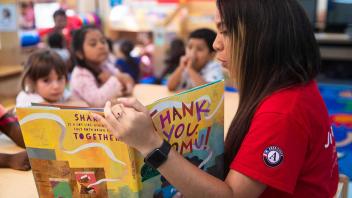After-school programs are defined as safe, structured activities that convene regularly in the hoursafter school and offer activities to help children learn new skills, and develop into responsible adults.Activities may cover topics such as technology, reading, math, science and the arts. Programs mayalso offer new experiences such as community service, internships or tutoring and mentoringopportunities.
Without structured, supervised activities in the after-school hours, youth are at greater risk of beingvictims of crime, or participating in anti-social behaviors. In fact, juveniles are at the highest risk ofbeing a victim of violence between 2 p.m. and 6 p.m.2 And the peak hour for juvenile crime is from 3p.m. to 4 p.m., the first hour that most students are dismissed from school.
Other safety issues surface in the after-school hours as well. Students who spend no time inextracurricular activities, such as those offered in after-school programs, are 49 percent more likely tohave used drugs and 37 percent more likely to become teen parents than are those students who spendone to four hours per week in extracurricular activities.
Beyond serving a significant role by simply offering youth a safe haven, after-school programs offerchildren and youth opportunities to learn new skills such as conflict resolution, prepare for asuccessful career, improve grades and develop relationships with caring adults. These skills can becritical in helping youth develop in positive ways and to avoid behavior problems and conflict.
The link between after-school program participation and violence prevention and increasedachievement among youth is increasingly evident as new research emerges. After-School Programs:Keeping Children Safe and Smart, a joint report from the U.S. Department of Education and U.S.Department of Justice, shows that students in after-school programs exhibit fewer behavioralproblems, better ability to handle conflicts and improved self-confidence.
In Los Angeles, a UCLA evaluation of an after-school initiative called LA’s BEST (www.lasbest.org)found that students with higher levels of participation in LA’s BES T program had better schoolattendance and higher scores on standardized tests of mathematics, reading and language arts. Astudy by RAND of fourth graders in Foundations, Inc. after-school programs (www.foundationsinc.org) reported that children in the programs outperformed their counterparts on academicachievement tests.
Despite the tendency to think of older children as able to take care of themselves, studies show thatafter-school programs benefit youth at all levels, from elementary to high school. In fact, middle andhigh school students may often benefit most from these programs. A recent survey of high schoolstudents, for example, revealed that students in after-school programs had greater expectations for thefuture and were more interested in school than their peers.
Many government agencies and nonprofit organizations have begun to promote after-school programsas a positive resource for youth in the past several years. However, while the concept seems to betaking off, the need for programs is far from being met. More than 28 million school-age childrenhave parents who work outside the home, and that number is growing. Applications for after-schoolprogram funds from the federal government’s 21st Century Community Learning Centers(www.ed.gov/programs/21stcclc/index.html) initiative outpace the resources available by two to one.
While the initiative has grown exponentially in the past four years (from $40 million in 1998 to $846million in 2001), the U.S. Department of Education had to deny 1,000 high-quality proposals forafter-school funding in the last grant cycle. This gap reflected a need in 2000 that was more thandouble the available resources.
